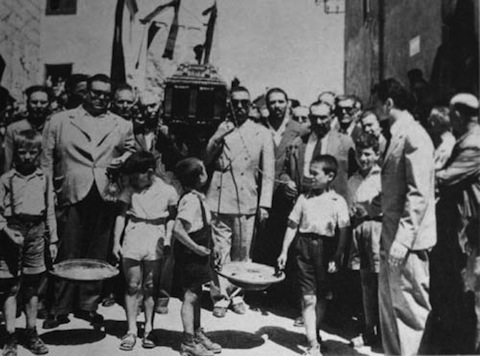
The late Hmong military leader Vang Pao is currently being memorialized in grand fashion, as his culture’s traditions dictate:
[Vang Pao’s] funeral — six days and nights, with 10 cows slaughtered and stir-fried each day — has become a send-off for the ages. It began last Friday, his body borne on a horse-drawn carriage through the streets of downtown Fresno, throngs of grieving Hmong lining the way. Scottish bagpipers played “The Green Hills of Tyrol” and two T-28 planes, the aircraft piloted by Hmong guerrilla fighters in the Vietnam War, flew overhead.
And the funeral rolled down a long red carpet through the weekend, as thousands more Hmong from across the country, and some from as far away as Thailand and France, strode into the convention center of this farming capital of California to say goodbye.
Such lavish funerals obviously serve a purpose beyond just allowing a man’s admirers to grieve. They are created as evidence that a marginalized community is strong enough to survive its leader’s passing. This has always been the subtext in those outrageously opulent Mafia funerals; they’re not just about showing how much wealth and power a crook had accumulated, but also an attempt to demonstrate that his criminal realm will continue on in his absence. If a capo‘s underlings or successors can effectively gather the funds necessary to pay for this many flowers—not to mention work out the logistics of the procession and the afterparty—then surely they can comandeer the late man’s rackets.
The trouble is, those who lack power still retain the competitive instinct, and so desire lavish funerals that have no political motive. This can be ruinous not just to a family, but to a society; in Ghana, for example, hands are frequently wrung over the percentage of income that is spent on ornate coffins. And for well over a century now, people in the U.S. have rightly feared that too much familial wealth is dedicated to big send-offs, rather than guaranteeing the security of the ensuing generations. The New York Times chimed in on the topic 125 years ago:
It would be surprising to learn how common it is for families in this and other large cities to overtax themselves to provide paraphernalia for the tomb. Not infrequently they spend every dollar that has been left, even exceeding the amount sometimes, and in many instances anticipating a large share, if not all, the insurance upon the life of the deceased. Not a few instances might be cited in which money has been borrowed to defray funeral expenses when, if the funeral and been modestly and properly managed, there would have been no need of borrowing at all. What an unworthy return is this to the man who has probably worked hard for years, and given himself less anxiety to save something for his family in the event of his sudden death! Of what advantage is it to him, in his sheeted sleep, that there should be a few more flowers or carriages, that the coffin should be real rosewood, or the handles genuine silver? All has ended; all is well with him. To him money is no longer essential; whatever he has gained beyond necessary expenditure, should be devoted to the service of the living.
This is why, when our time comes, this particular khan would like to be cremated and have the ashes strew somewhere meaningful—the acropolis at Marcus Garvey Park, perhaps, or the the subway platform where the Grand Empress entered the picture. However, it would also be nice if I could leave behind just enough money to fund a marble Microkhan Memorial Bench—to be manned by two 24-hour security guards armed with cattle prods, who will strictly enforce a “no sitting” policy. Is that too much to ask?
(Image via the biography of Calogero Vizzini)


Like gas stations in rural Texas after 10 pm, comments are closed.